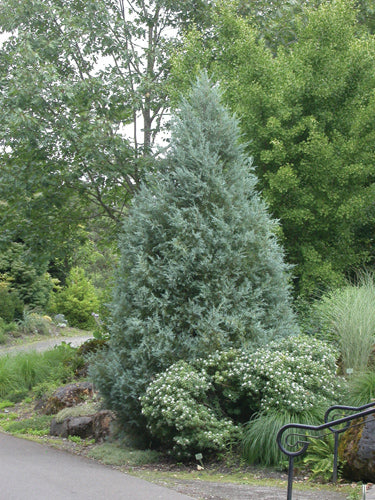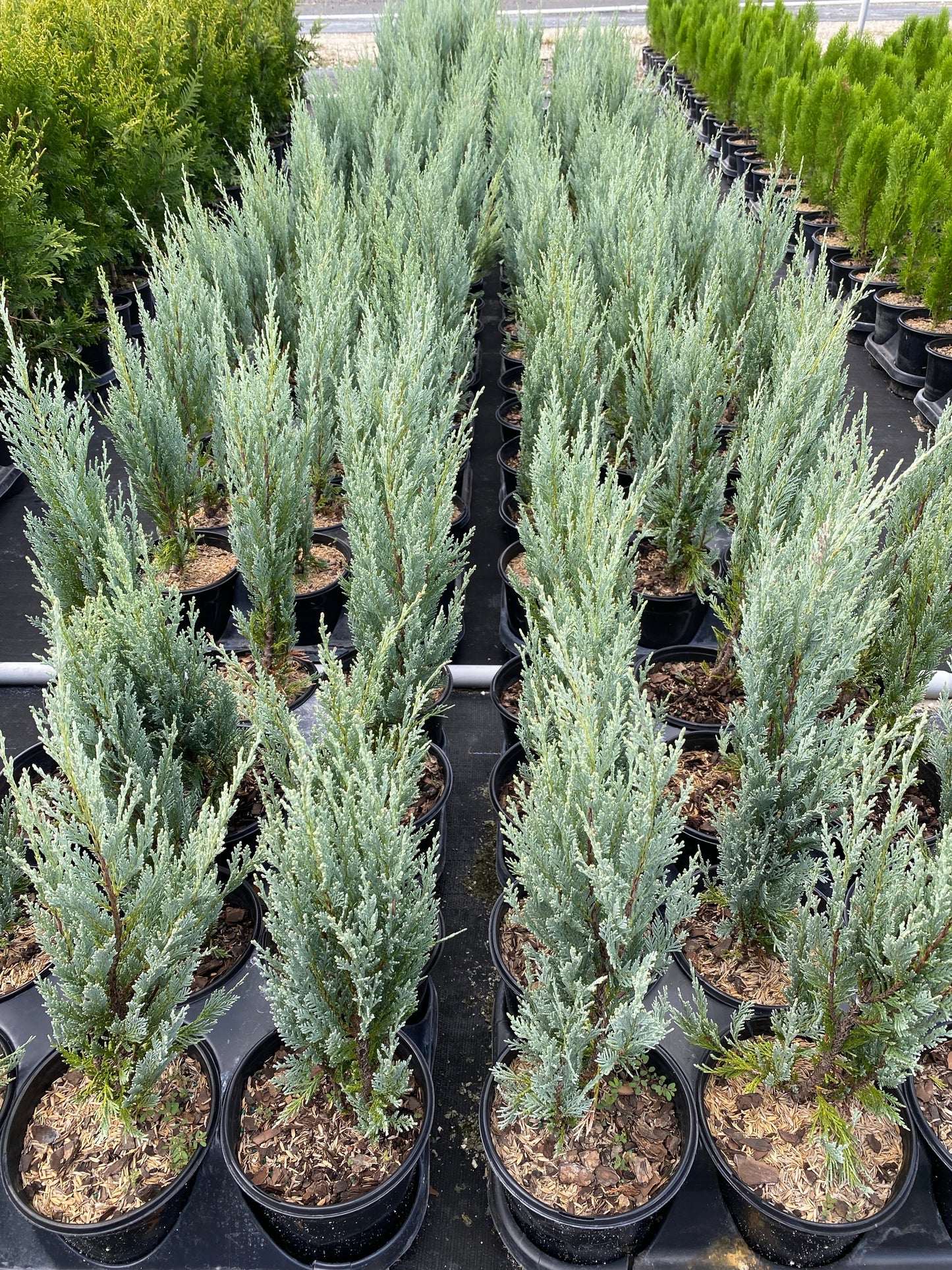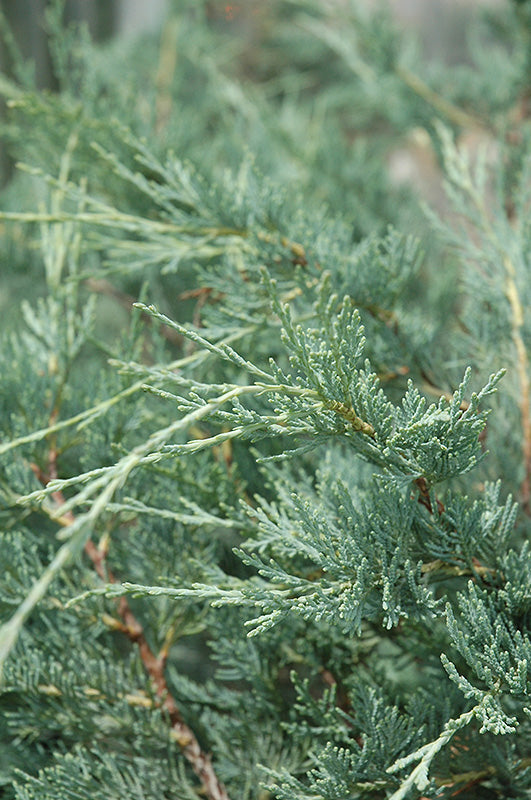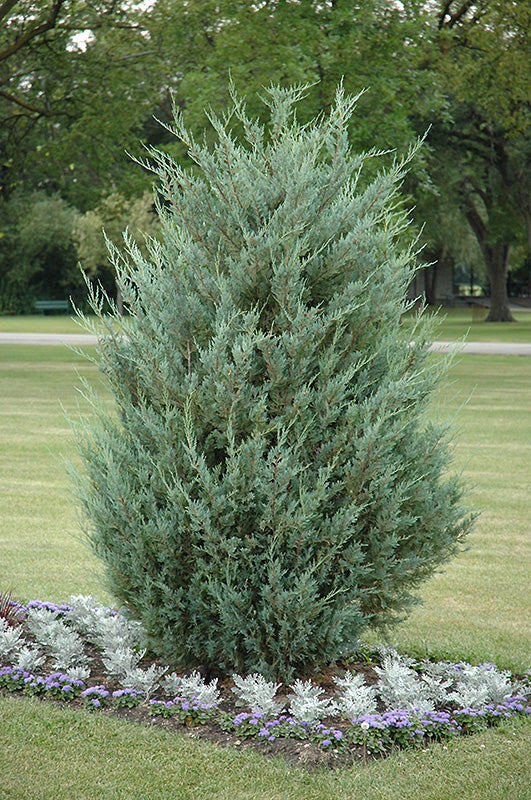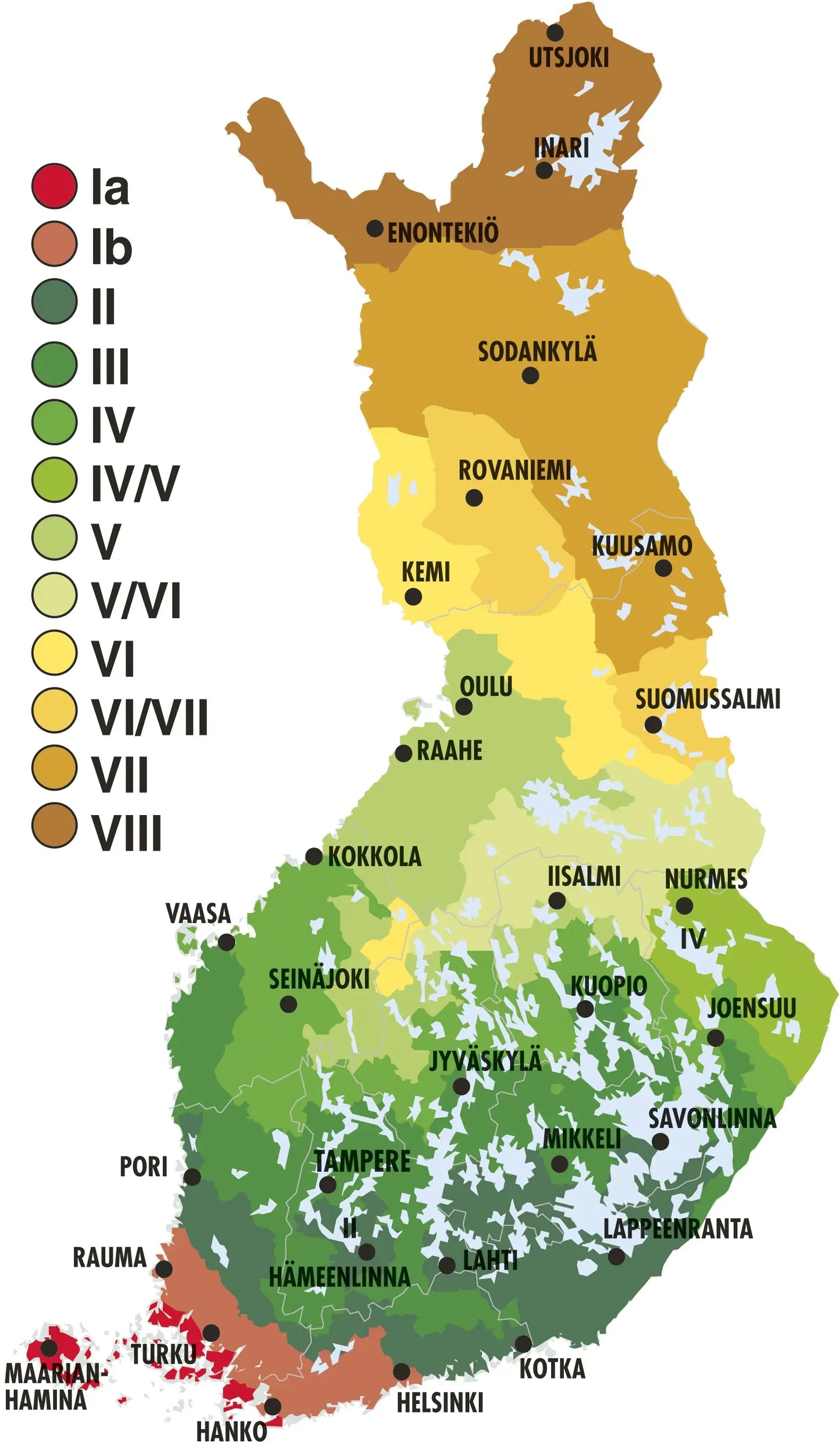Erikoistaimet.fi
Juniperus Scopulorum 'Moonglow' - Rocky Mountain Juniper
Juniperus Scopulorum 'Moonglow' - Rocky Mountain Juniper
Couldn't load pickup availability




Juniperus scopulorum Moonglow has exceptionally showy, silver-blue needles in a wide pyramid. This plant has a very attractive color that is perfect for screens, hedges and group plantings. It is dense, tightly branched and the silvery gray leaves reflect the moonlight - hence the name Moonglow. Reaches a height of 6 meters and a width of 2.5 meters after 10 years.
A dense multi-stemmed evergreen shrub with a narrow upright and columnar growth habit.
This is a relatively low maintenance shrub and is best pruned in late winter when the threat of extreme cold has passed. Deer don't particularly care for this plant and usually leave it alone in favor of tastier treats. It has no significant negative properties.
Planting and growing
It grows slowly and under ideal conditions can be expected to live 70 years or more.
This shrub should only be grown in full sunlight. It adapts well to both dry and wet growing conditions, but does not tolerate standing water. It is considered drought tolerant. It is not specific to soil type or pH. It tolerates some urban pollution.
As the name suggests, the Rocky Mountain juniper comes from the western parts of North America, the Rocky Mountains region and their surroundings. The distribution area reaches in a north-south direction from the southwestern parts of Canada through the United States to the state of Arizona and in some places to the northern parts of Mexico. It usually grows at an altitude of approx. 500–2700 m. Rocky mountain juniper is the western equivalent of juniper (Juniperus virginiana), as the differences between the species are small. They also cross with each other. Several varieties have been bred from the rocky mountain juniper. One of the most popular is the upright variety with blue-gray leaves. It was first introduced to the market by Pine Grow Nurseries, in Pennsylvania, USA. It was apparently selected from among the naturally born seed seedlings of the 'Sky Rocket' variety in 1949. The variety is more upright compared to its parent and is gradually replacing it in Europe. Seen from a distance, the plant resembles its older ones in appearance, e.g. Mediterranean cypress (Cupressus sempervirens).
Rocky mountain juniper is a slow-growing small tree, the growth rate can be approx. 10–15 cm in length and 5 cm in width per year. It is one of the narrowest juniper varieties. In Finland, depending on the place of growth, it can become approx. 1.5-3 meters high and 0.5-0.8 m narrow, single-trunk, densely growing, upright branching and -growing, compact, small tree, the shoots of which are densely pressed vertically against the trunk. The bark of the tree is red-brown. Young shoots are blue-green in color. The plant's scale-like, evergreen, opposite thuja-like leaves are soft, pointed and silver-blue. They are 1-3 mm in size. long ones. When rubbed, they give off a strong, pungent smell.
Rocky mountain juniper is dioecious and it blooms in late spring and early summer. The stamens are approx. 2-4 mm in size. The berry-like seed cones are approx. 5-8 mm in diameter. sizes. It takes about 18 months for them to mature. They turn silver-blue when they ripen.
Rocky mountain juniper thrives best in a sunny location. It tolerates a wide variety of soils in terms of nutrient content. It thrives best in slightly acidic soil. The soil must be fresh and permeable, as the plant does not tolerate standing water. An unsettled young seedling needs regular watering. The established rocky mountain juniper also tolerates dry periods. Rocky Mountain juniper does not thrive in an urban environment; It does not thrive in very dense or saline soil. The plant does not need a shaping cut, as it develops a symmetrical columnar shape without cutting. However, diseased and dead branches should be removed from the plant. Although the variety is rather narrow-growing, in order to prevent shape damage caused by heavy snow, at least in areas with a lot of snow, it would be good to tie the top of the tree in a pile for the winter. The plant should also be protected from the spring sun, e.g. by wrapping it in a shading net. In cold winters, the young shoots of the rocky mountain juniper can be damaged by frost. The variety is also suitable for growing in a pot. Although, it limits the size of the plant. As a potted plant, it needs ample watering every 7-10 days, depending on the weather. Rocky Mountain Juniper is unfortunately prone to some insect pests and fungal diseases. However, the variety is said to be completely resistant to the Gymnosporangium fuscum fungus, which causes pear rust on pear buds, which plagues the base species and several of its varieties.
Ice

